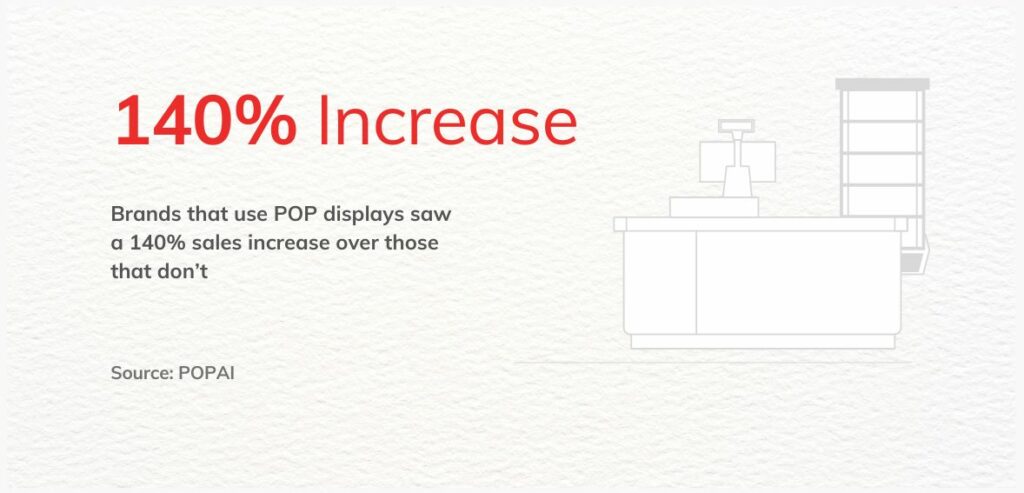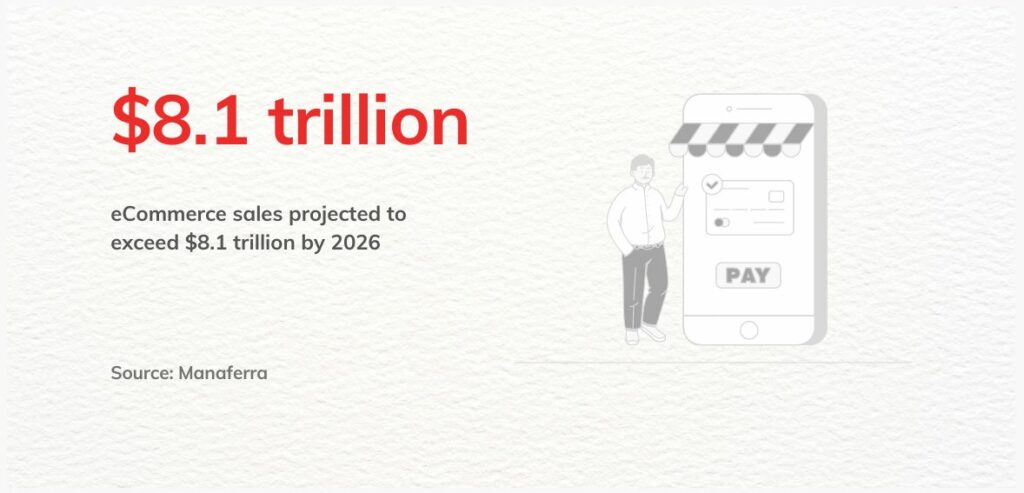In the fast-paced world of retail, standing out from the competition and maximizing operational efficiency is more crucial than ever. With the advent of e-commerce reshaping consumer preferences, traditional brick-and-mortar stores face the pressing challenge of adapting to an increasingly digital marketplace.
Retailers constantly seek innovative ways to attract and retain customers, enhance the shopping experience, and boost sales and profitability. This drive towards optimization touches every aspect of the retail operation, from streamlining processes to adopting new technologies to refining employee productivity to encouraging customer loyalty. The need to innovate is about keeping pace and staying relevant in a consumer-driven market bombarded with choices, where more than 70% of Americans prefer online shopping.
Amidst these dynamics, this article aims to provide actionable insights and expert tips to empower retailers to boost retail business efficiency. Whether combating the shift towards e-commerce or striving to elevate your store’s performance, embracing these strategies is critical to ensuring your retail business remains competitive and prosperous.

Source: Statista – E-commerce as a percentage of total retail sales worldwide from 2021 to 2027
Understanding the Economic Impact of Retail Sales
Retail sales are a crucial indicator of overall economic health. It’s right to assume that when retail sales experience robust growth, it often signals a thriving economy. Sluggish growth may hint at economic stagnation or decline. Strong retail sales suggest that consumers have sufficient money to spend on goods and services, fueling economic expansion and encouraging a positive business environment.
Retailers are crucial chain links in the economic ecosystem. They procure goods from wholesalers in large quantities and distribute them to end consumers in smaller quantities. As retailers have access to different suppliers/manufacturers, they curate a wide range of products and contribute to developing more sustainable goods.

Source: Statista – Retail e-commerce sales compound annual growth rate (CAGR) from 2024 to 2028 by country
The retail industry has a significant economic influence in the United States, with recent data estimating it to be around $5.5 trillion in annual sales. This industry is the major employer, with over 15 million individuals working there. Additionally, the retail industry contributes substantially to the nation’s GDP, accounting for more than 4% of its total output. Increased retail sales can have far-reaching benefits for small businesses. Enhanced revenue streams may empower smaller firms to expand their workforce, diversify their operations, and invest in innovative technologies and equipment.
6 Practical Tips to Boost Retail Business Efficiency
Below are several tried and tested strategies that could boost sales in the retail sector:
1. Invest in Employee Training
Retail efficiency is directly impacted when you invest in staff training. Equipping employees with essential knowledge and skills optimizes performance and elevates customer service and operational efficiency. A comprehensive training program should include vital areas including:
- Effective communication
- Customer service skills
- Product knowledge
- Sales techniques
- Inventory management
Training initiatives may also include handling challenging customers, visual merchandising, store protocols, and teamwork. Employees can undergo training through various methods such as on-the-job learning, workshops, or online resources.

Source: Retently
Continual investment in team member development addresses knowledge gaps and cultivates a sense of loyalty and job satisfaction. Remember, well-trained employees effectively manage diverse customer scenarios, leading to improved customer retention and increased sales.
2. Follow Customer-First Approach
A customer-first mindset revolves around putting the customer at the core of your business purpose. This means focusing, prioritizing, and planning to fulfill their needs and ensure a positive experience throughout their interaction with your organization. Every retailer should aim to adopt this approach, beyond merely stocking desired products to creating a sense of delight for the customer.
Business owners/managers should engage in meaningful conversations with their customers, understand their requirements, and offer solutions tailored to their preferences and budgets. You build trust and loyalty by providing excellent service and quality products, encouraging repeat business.
Prioritizing positive customer experiences not only means more profit but also fuels business growth and encourages a lasting relationship. Many successful disruptors in various industries, such as Amazon, Walmart, and Kroger, have thrived by placing customers at the forefront of their operations and providing a customer-centric and personalized experience.
Let’s use Walmart as an example to understand customer-first strategies.
Walmart prioritizes building and nurturing customer relationships by enhancing satisfaction and reducing defection rates. The key to its success lies in meeting its customers’ service needs, which directly impacts its sales performance. Understanding that customers want value, Walmart offers a diverse range of products at affordable prices, ensuring guaranteed satisfaction.
Walmart significantly emphasizes customer service as part of its strategy. This includes readily available staff, prompt responsiveness, personalized assistance, proactive initiatives, and loyalty programs. Through these initiatives, Walmart aims to increase its share of customers and maintain a sustainable competitive advantage.
3. Seamless Communication is a Must!
In any retail business, teamwork and communication among staff are crucial. With numerous employees, store workers, management, and other departments must have effective communication channels. Poor communication can lead to minor issues like missed announcements, process confusion, and logistics mismanagement. Interestingly, a recent study revealed that 97% of employees believe communication impacts their ability to complete daily tasks effectively.

Source: Haiilo
Establishing multi-channel communication is essential to ensuring consistent and reliable communication among workers, supervisors, and managers. Tools like messaging apps or retail management systems with internal emails facilitate seamless information flow, helping everyone stay aligned with the retail store’s goals and ongoing initiatives.
4. Consider POP Marketing
Point-of-purchase (POP) display advertising is a tactic used to grab shoppers’ attention within stores. It’s commonly deployed during marketing campaigns, like product launches, promotions, or seasonal events, to boost sales opportunities.
These campaigns come in various forms, often using practical solutions such as display materials. These materials offer a visually stimulating showcase of products and brands to attract customers.
Imagine a shopper on her usual grocery run, focused on her list and rushing through the aisles. Encouraging her to deviate from her routine presents a challenge. Here’s where POP displays offer a visual break from the monotony. Shoppers find these disruptive offers intriguing and tempting. Ultimately, behind every in-store POP effort lies a solid ROI.
Brands employing POP displays experience a sales increase of 140% compared to those that do not.

Source: D’Andrea Visual
To achieve success in generating sales from your POP displays, you need well-crafted point-of-purchase signs strategically placed. The best displays meet these criteria:
- They’re positioned at eye level.
- They fill vacant/empty spaces effectively.
- They’re prominently hung from the ceiling, ensuring visibility.
- They’re places where customers can have a peak (naturally).
Implementing even a few of these tactics can significantly boost your conversion rates.
5. Go Online
An online presence is vital for enhancing retail efficiency in today’s digital world. With the pervasive use of technology, consumers increasingly rely on online platforms for shopping, highlighting the importance of retailers having a digital footprint. Creating a website and social media profiles and utilizing eCommerce channels enables retailers to broaden their reach and connect with a larger audience.
Moreover, an online presence facilitates engagement with customers, showcasing products and services and offering the convenience of online shopping, which in turn drives sales and enhances customer loyalty. Additionally, it allows retailers to gather valuable customer data, providing insights that can inform marketing strategies and fuel business growth.

Source: Manaferra
According to projections, online retail is expected to contribute to 20.8% of total retail sales in the US by 2024, with e-commerce sales projected to exceed $8.1 trillion by 2026. These figures highlight the significant shift towards online shopping, emphasizing the importance of establishing a robust online presence for retailers to thrive in the digital marketplace.
6. Plan Your Space
The layout of a retail store is a crucial part of its operation. It’s all about how the store is arranged, including where things are placed to help guide customers’ movements, what they see, and what they decide to buy. This setup uses smart spacing to boost sales, cut down on costs, and increase profits.
An intelligent layout also means combining similar or related products to encourage more sales across different categories or brands. The goal is to create a positive shopping environment that makes people want to buy more. A well-thought-out layout can help deter theft by strategically placing high-value items, exits, and security measures.
1. Make It Accessible
A retail store’s design should welcome everyone. Here are some ways to make a space accessible to everyone: Make aisles wider for wheelchairs and strollers to move and turn easily. Avoid shelves and displays that are too high or too low. Keep the floor clear of clutter and anything that might cause a trip. Include ramps and steps at the entrance and any split levels to ensure everyone can get around easily.
2. Use Your Windows Display Well
First impressions count a lot, especially when someone sees your store for the first time. Your window displays are a great chance to grab attention and show off what you have in store. Think of them as your front-line advertisement, inviting people to come in and see more.
3. Light It Up Right
Remember walking into a big supermarket with bright lights and high ceilings? It feels very professional and tidy. Now, think back to entering a small local store or a cozy candle shop, where the lighting is softer and creates a warm atmosphere. The way you light your store should match the vibe you’re aiming for, making it inviting and suited to the kind of shopping experience you want to offer.
4. Make Shopping an Experience
Shopping should be fun and relaxing. Try to engage as many senses as you can. A gentle, welcoming scent can make a big difference. Think of a subtle candle that’s pleasant but not overwhelming. Choose music that fits your store’s personality and what your customers like, whether it’s indie tunes for a unique coffee shop or popular hits for a larger store. And don’t forget to use your logo and brand colors across your displays to make your mark.
7. Encourage Flexible Work Options
Introducing flexible work options like working from home, part-time roles, or sharing jobs can help stores attract a broader range of workers. This approach helps ensure they have enough staff on hand. It can make employees happier and less likely to leave, which means a more consistent and driven team.
Also, these flexible options let stores adjust their number of workers based on their workload, making sure they’re always ready for customer needs without having too many staff. This strategy can lead to cost savings and higher profits. As online shopping becomes more popular, flexible work arrangements can help stores better manage their digital presence and quickly deal with customer questions and issues.
Conclusion
Innovative hacks for boosting retail business efficiency offer a dynamic roadmap for success in an ever-evolving market. Recognizing the pivotal role of retail in economic stability underscores the importance of adopting strategies that foster growth and resilience. From prioritizing customer-centric approaches to harnessing the power of online platforms, the landscape of retail optimization is rich with possibilities.
Investing in employee training is crucial to developing a skilled workforce capable of delivering excellence. Adopting a customer-first mindset is essential to establishing strong customer relationships that drive sustained growth. Businesses can boost engagement and conversion rates by providing seamless communication channels and strategic point-of-purchase marketing, propelling them toward greater success.
To remain relevant in the digital age, retailers must embrace online opportunities and plan their physical spaces thoughtfully. These innovative techniques can help retailers navigate a competitive marketplace, improve efficiency, and ultimately increase profitability.

